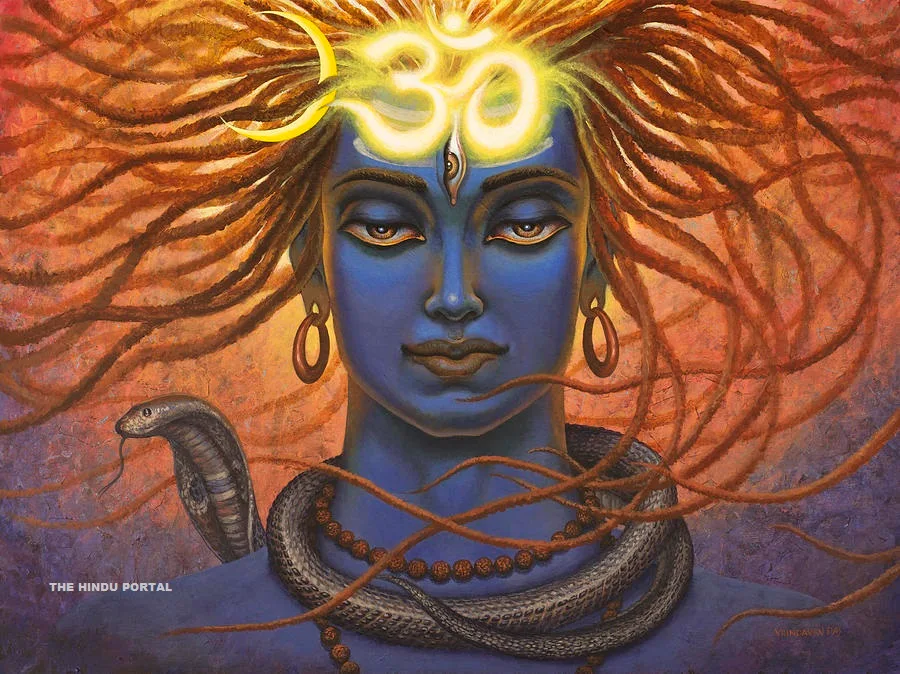Hindu Dharma is based on the Eternal Truth. It is not based on any single book or the words of any single teacher or prophet. It does not follow any blind doctrine. There are literally thousands of books, spiritual literature, and scriptures to guide both the beginners and scholars. There are several pathways given to the followers. Everyone is allowed to study, question, doubt, analyze, reason and then accept the teachings after their own spiritual experience.
The first sets of books are known as "Sruthis" or "Vedas." They are "of Superhuman or Divine origin" [Apaurus.e' ya]. They are unchangeable, highest spiritual knowledge of the Eternal Truth ever known. They are older than creation itself. At the beginning of every era [Kalpa], the Supreme God, Brahmam, creates Himself as Brahma and gives Him the knowledge of Vedas as His own breath. The Universe and all its beings are created by Brahma out of the sound of Pranava Manthra "OM" and the knowledge of Vedas.
Vedas are the primary authority and the very soul of Hinduism. They were revealed to the Rishis, the sages or seers, who received them as intuition by direct revelations from God. Sage Veda Vyasa codified and organized the four Vedas, Rig, Yajur, Saama and Atharva. His disciples Paila, Vaisampayana, Jaimini, and Sumanta taught them to their disciples and the latter in turn to their pupils. This way, the knowledge of Vedas was passed on through generations by memorizing and reciting the verses for thousands of years.
The Rig Veda consists of 1028 Sookthas collected as 21 sections or Sakha's with hymns in praise of the Divine. Yajur Veda, with 109 sakhas, mainly consists of Hymns used in religious rituals and rites. Saama Veda has 1000 sections, and it is made of Verses from Rig Veda set to music. Atharva Veda has 50 sakhas with 598 hymns, gives many rites and rituals to guide man in his daily activities and materialistic life, to ward off evil and destroy enemies.
By: Bala N. Aiyer
NEXT POST: 👉 The Upanishads, Upavedas, and Vedangas that explain
{full_page}
The first sets of books are known as "Sruthis" or "Vedas." They are "of Superhuman or Divine origin" [Apaurus.e' ya]. They are unchangeable, highest spiritual knowledge of the Eternal Truth ever known. They are older than creation itself. At the beginning of every era [Kalpa], the Supreme God, Brahmam, creates Himself as Brahma and gives Him the knowledge of Vedas as His own breath. The Universe and all its beings are created by Brahma out of the sound of Pranava Manthra "OM" and the knowledge of Vedas.
Vedas are the primary authority and the very soul of Hinduism. They were revealed to the Rishis, the sages or seers, who received them as intuition by direct revelations from God. Sage Veda Vyasa codified and organized the four Vedas, Rig, Yajur, Saama and Atharva. His disciples Paila, Vaisampayana, Jaimini, and Sumanta taught them to their disciples and the latter in turn to their pupils. This way, the knowledge of Vedas was passed on through generations by memorizing and reciting the verses for thousands of years.
The Rig Veda consists of 1028 Sookthas collected as 21 sections or Sakha's with hymns in praise of the Divine. Yajur Veda, with 109 sakhas, mainly consists of Hymns used in religious rituals and rites. Saama Veda has 1000 sections, and it is made of Verses from Rig Veda set to music. Atharva Veda has 50 sakhas with 598 hymns, gives many rites and rituals to guide man in his daily activities and materialistic life, to ward off evil and destroy enemies.
By: Bala N. Aiyer
NEXT POST: 👉 The Upanishads, Upavedas, and Vedangas that explain











